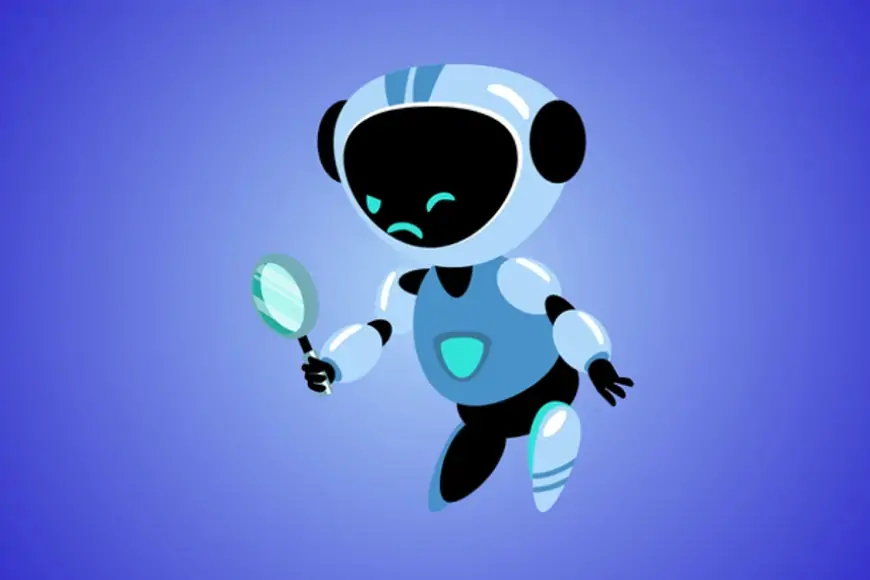How do AI detectors work? A look into their mechanisms and applications
Learn how AI detectors work, their mechanisms, and applications. Understand the technology behind AI detection systems.

How do AI detectors work?
AI detectors, also known as AI writing detectors or content detectors, are tools used to distinguish between text written by humans and that generated by artificial intelligence (AI) systems such as ChatGPT.
Typically, these detectors employ machine learning algorithms trained on both human-written and AI-generated text. They analyze natural language patterns to determine whether a given text was authored by a human or AI.
The process involves segmenting the input text into sentences, assigning a score to each sentence, and then aggregating these scores to generate an overall percentage indicating the likelihood that the text was AI-generated.
To evaluate content, these algorithms utilize natural language processing techniques to gauge its originality. Two key metrics used for this purpose are perplexity and burstiness.
Perplexity measures the predictability or randomness of a text. Large language models (LLMs) and AI content creation tools aim for low perplexity, which indicates predictability and coherence to readers.
AI detectors use perplexity scores to discern automated text generation, as low scores suggest AI authorship, whereas high scores indicate human-written text with more linguistic variation.
Burstiness, on the other hand, assesses the variability in sentence structure and length. Texts with consistent sentence structures and lengths exhibit low burstiness, while those with more variation demonstrate high burstiness.
AI-generated text tends to have low burstiness, featuring sentences of similar length and structure. Conversely, human-written text displays greater variability in sentence length and structure, resulting in higher burstiness.
What is the significance of AI detectors?
AI detectors play a crucial role in assisting enterprises, academic institutions, and other organizations in verifying the authenticity of human-authored text.
For instance, academics can utilize these tools to ensure students are composing their own essays, while marketers can verify the originality of paid content. Similarly, recruiters can deploy them to validate the authenticity of candidates' applications.
As the adoption of AI continues to rise, these tools are becoming increasingly valuable. In the education sector alone, Turnitin discovered that out of 65 million student papers reviewed, over 2 million papers (3.3% of the total) were flagged for containing at least 80% AI-generated content.
Likewise, although it is challenging to determine the exact prevalence of AI-generated content online, NewsGuard, a misinformation tracking service, identified 50 online news sites that are predominantly written by AI software.
These statistics underscore the widespread presence of AI-generated content. While this phenomenon is not inherently negative in certain contexts, there are situations, such as in education, where it is imperative to address.
Are AI detectors reliable?
The effectiveness of AI detectors relies on several factors. While certain providers, such as Originality AI and Turnitin, claim up to 99% and 98% accuracy in identifying AI-generated content, the reliability of these detectors can vary.
One major challenge is that users can manipulate tools like ChatGPT to evade detection. They may use a combination of AI-generated and human-edited text to confuse scanners.
Additionally, many detectors are prone to false positives, incorrectly identifying human-written articles as AI-generated. This can have serious consequences if organizations take action based on these inaccuracies.
Therefore, AI detectors are best used as a tool to flag content for further scrutiny. Nevertheless, these systems are continuously advancing, so it is possible that their accuracy will improve over time.
What are some instances of AI detection tools?
Currently, there is a diverse array of AI detection tools offered on the market. GPTZero, Copyleaks, Scribbr, Undetectable AI, and Turnitin are among the solutions available for identifying AI-generated content, each with varying levels of accuracy.
These tools cater to different needs and purposes. For instance, GPTZero specializes in analyzing student writing and academic text to detect content generated by ChatGPT or GPT-4. On the other hand, Copyleaks provides a hybrid content checker approach, supporting educational and corporate institutions with built-in plagiarism detection features.
How can I appropriately react to content generated by AI?
AI-generated content is not inherently negative. Therefore, it is the responsibility of each organization and institution to evaluate whether the utilization of AI in a particular context (and to a certain degree) signifies misconduct or deceitfulness.
For instance, if a student employs ChatGPT to compose an essay and presents it as their original work, this constitutes misconduct and an intention to deceive the evaluator.
In essence, if a user's AI detection or plagiarism score is below 15%, the work is typically deemed acceptable as an original piece.












































